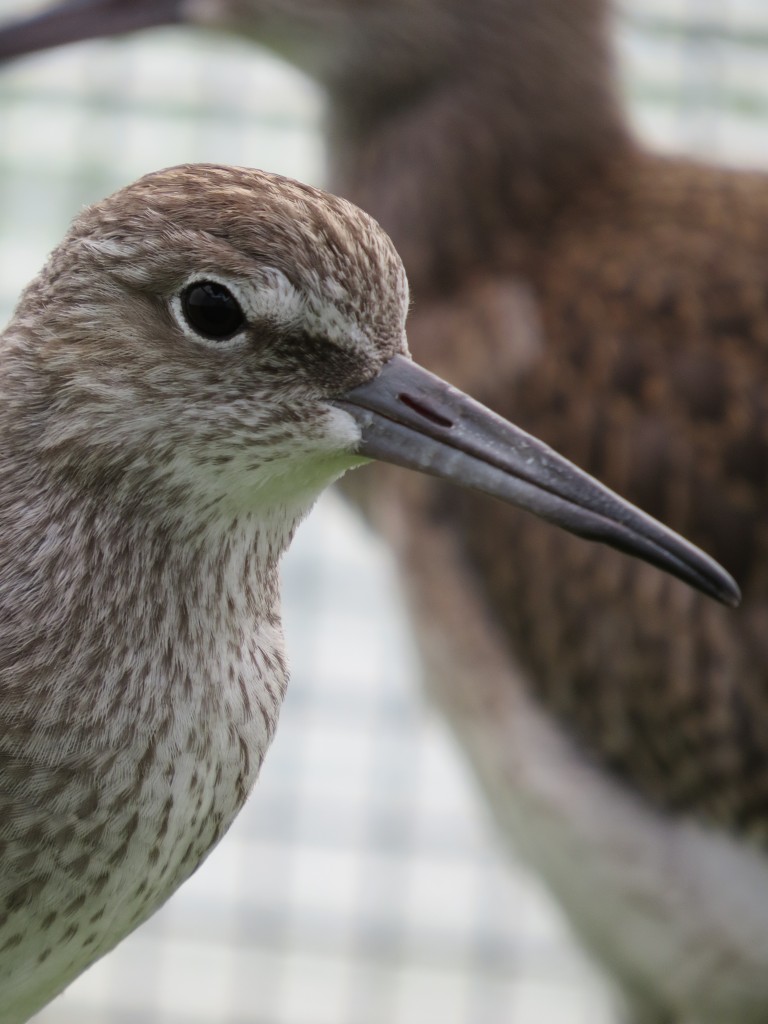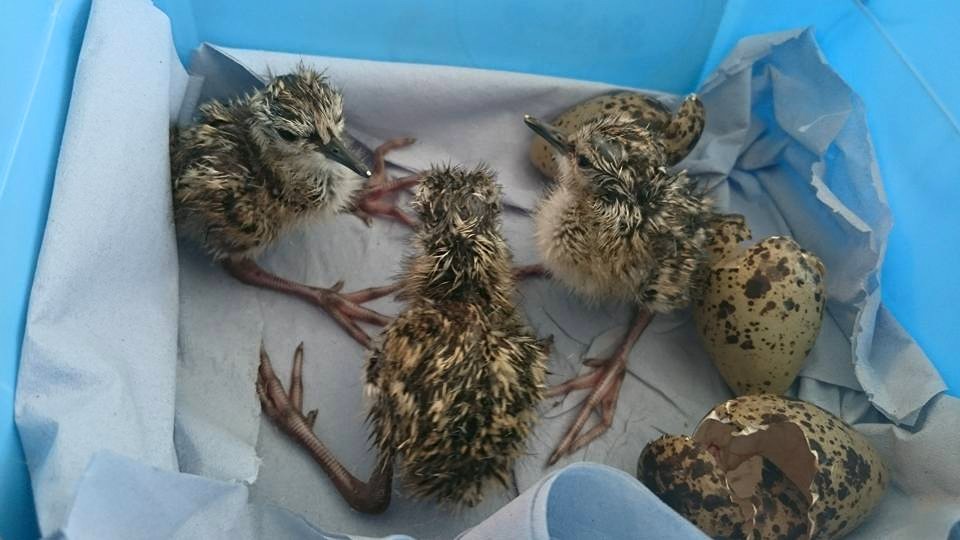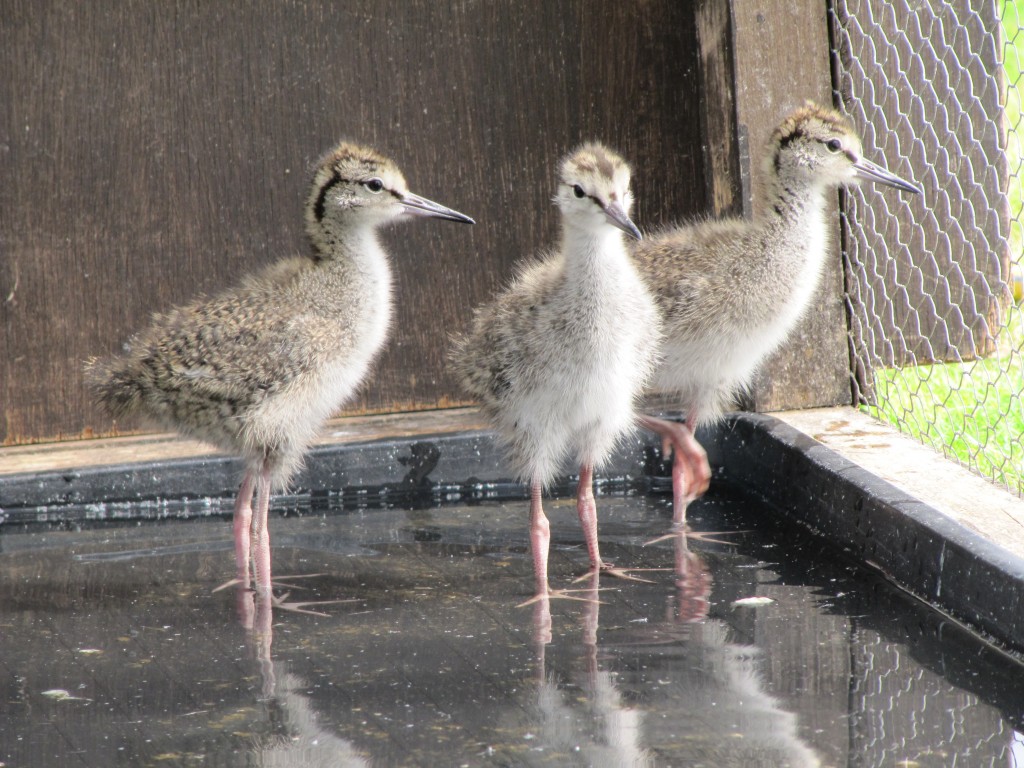Some wonderful waders...
This season I was lucky enough to be involved in hand-rearing some wading species once again. You may have seen in our PR pages a small piece on a Ruff being hand-reared with a duck for company, and I'm hear to tell you that it was as funny as it sounds!
Below is the lucky male/female Ruff in question. Upon receipt of the clutch of Ruff eggs we were a little disappointed to discover that there was only one viable egg. It was not surprising however because the Ruff are only now in their second summer since hatch, and this is their first ever breeding attempt.
We have a 2.3 ratio in the wader aviary and so the males kept each other busy competing for females, hopefully increasing the likelihood of fertility through competition. The three females didn't seem particularly enthralled, but hey! There's a huge period of every day when the birds on site are completely quiet and peaceful, so out of hours they clearly got down to breeding business...
The egg itself was smaller than expected, much smaller than a Redshank or Avocet, and the resulting chick exceptionally tiny. The beak was much smaller than either of the others (which possibly accounts for the smaller egg size!) but the feet and legs were absolutely amazing! Where Avocet have tiny webbed triangles and the Redshank have long flexible overlapping toes; Ruff have widely fanned toes on squat legs. I swear the only growing it did in the first week was upwards!
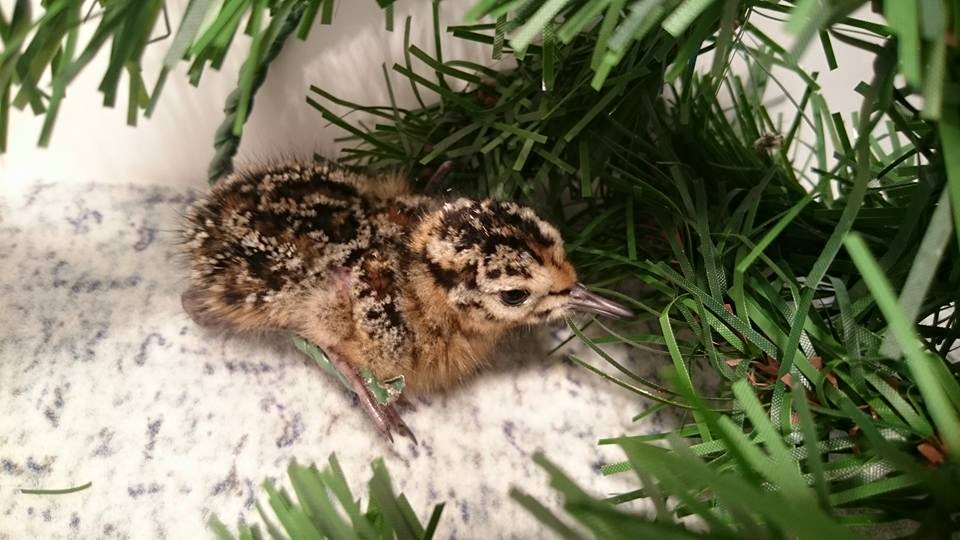
After 1 week it became quite clear by behavioural indicators that the Ruff was a bit dejected. We've reared Avocets alone before but they remained active, adventurous and hungry. This little Ruff just hid away all the time, too nervous to brave the outside world. We made the decision to try to offer it a friend, the support of which might encourage it to be braver. We didn't have a lot to offer but in the end I decided one a black-headed duck. An exceptionally exciting parasitic duck in it's own right, but so far as I was concerned the right colour, size and shape. In addition they are chilled out and non-aggressive, and slow moving. After just one day of this intriguing friendship, the Ruff was out from under its bush!
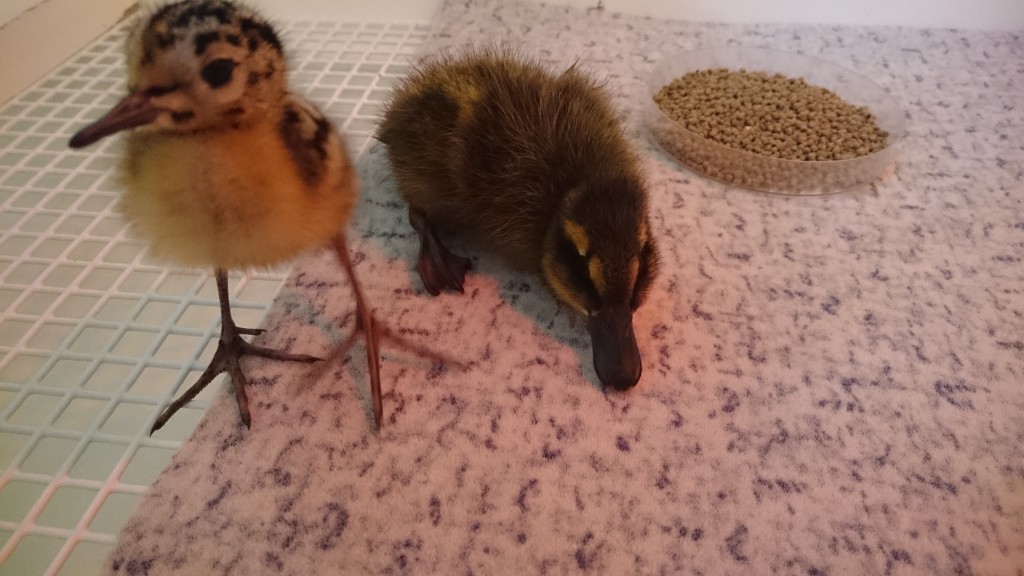
A few weeks previously, 3 Redshank had hatched (note the feet!)
On the day the Ruff hatched, this (below) is how they looked. It was our hope that if we could rear the Ruff to the point of fledging, that it could be added to this little brood for the remainder of its rearing process. And so, duck and Ruff began the race to feathers...
One thing is for sure, waders grow fast! Although the black-headed duck is a relatively quick growing duck, it has nothing on the lil' Ruff! The Ruff outgrew it very quickly, but seeing as the Ruff could do the duck no damage we let the pairing continue. The Ruff was rung during this period, and the duck was seen nibbling at the offending item; ducks are astoundingly aware of "new" items in their world. A single dew droplet on a feather than catches the light can have them nibbling for hours!
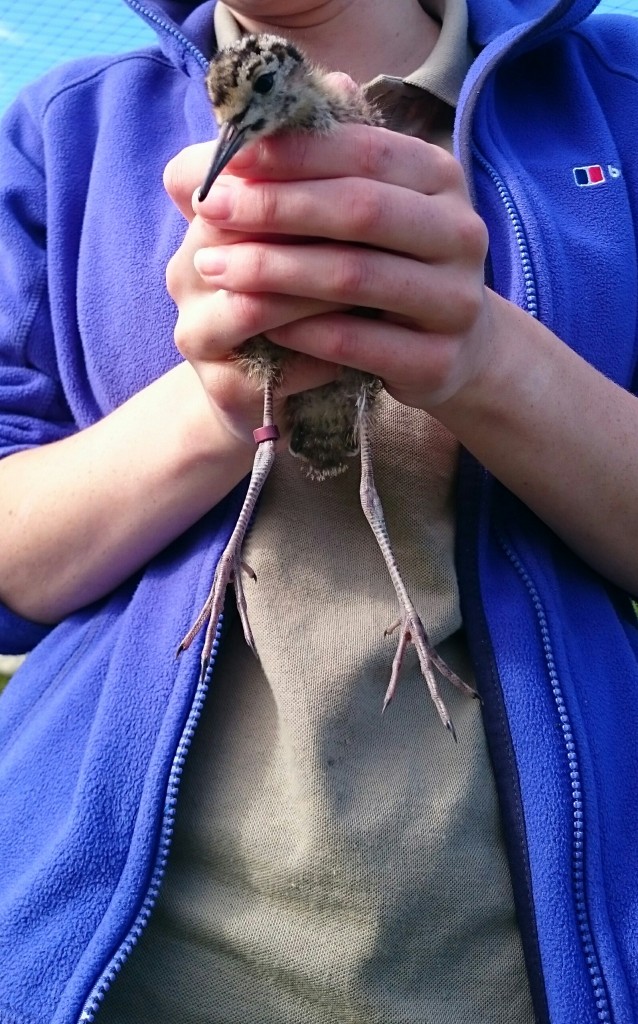
We decided at three weeks to move the ruff onto grass, but sadly it's water-loving black headed duck friend would never be ready for such a move. Instead we moved it out with a couple of domestic call ducks which were already 'grass-savy.' It spent another two weeks with it's new day-glo yellow friends until finally the big day came!
And here he/she is, resplendent in feathers and ready to go. We caught the Redshank in advance and left them crated whilst the Ruff spent a few minutes getting used to the enclosure. We then let them mingle. We provided a second food bowl in case of competition but there was no need; the Redshank didn't bat an eyelid. The irony of course, is that had I been adding a Redshank to a group of Ruff it may well have been a very different story indeed...
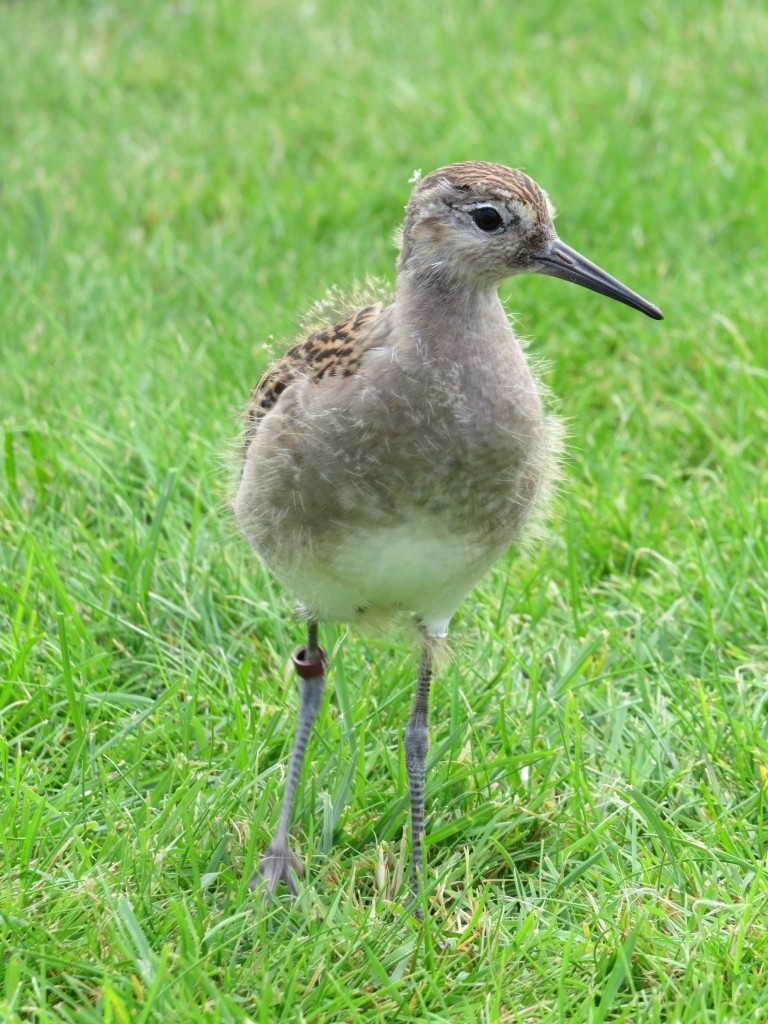
And so they all 4 continue to exist in relative harmony, and hopefully very soon we will be able to discuss their destinies at WWT. Either way, this Ruff has already seen a lot more of the world than many of its contemporaries. Hopefully it will prove a calm, relaxed and successful exhibit bird :)
